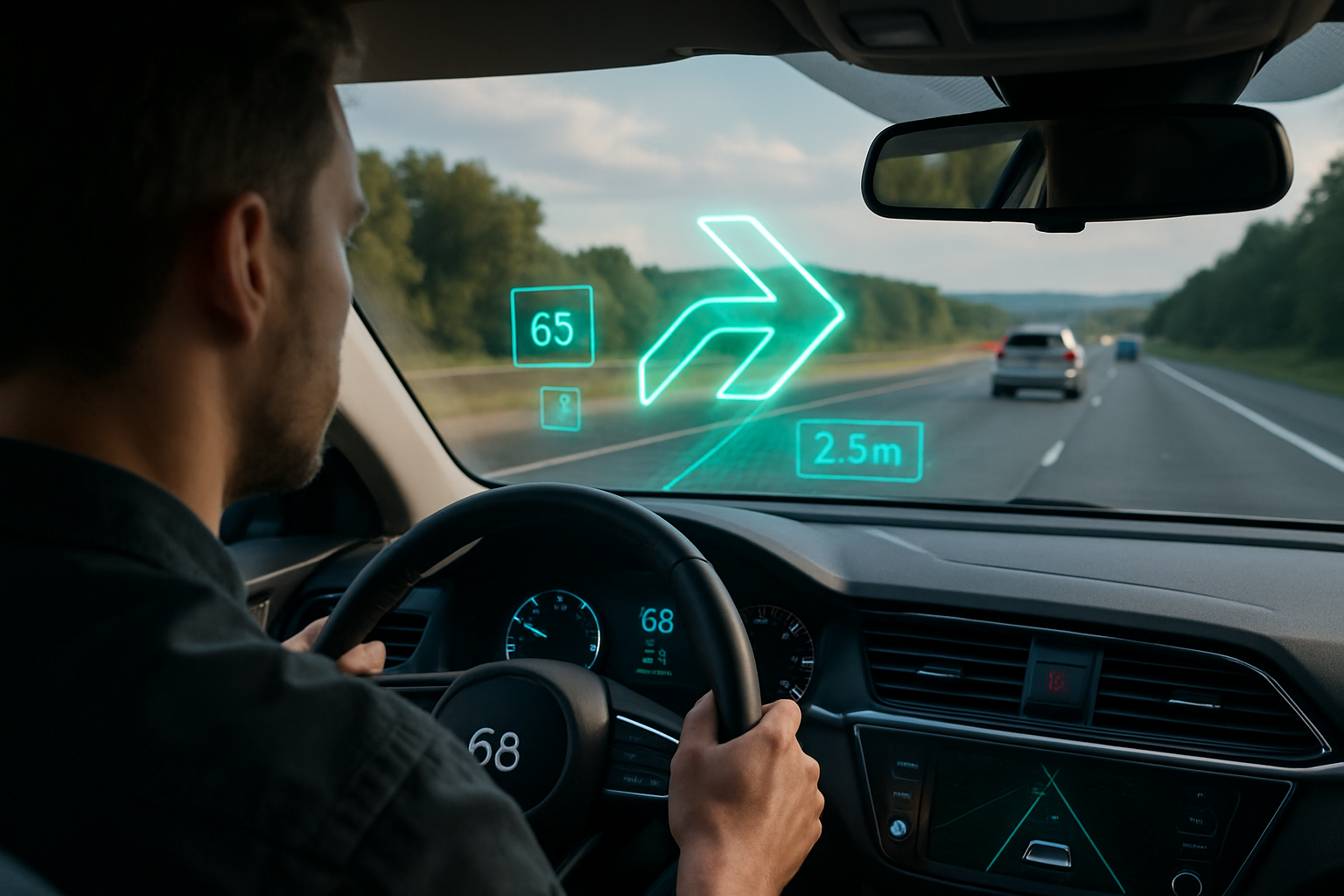Holographic Windshields: The Future of Automotive Display Technology
Imagine cruising down the highway, your eyes fixed on the road ahead, yet simultaneously accessing a wealth of information without ever glancing away. This isn't science fiction; it's the promise of holographic windshields, a cutting-edge technology poised to revolutionize how we interact with our vehicles and the road. As automakers push the boundaries of in-car displays, holographic windshields stand at the forefront, offering a seamless blend of safety, convenience, and futuristic appeal.

The leap from simple HUDs to full-fledged holographic windshields represents a quantum jump in both technology and application. Unlike traditional HUDs, which project information onto a flat surface, holographic windshields utilize the entire windshield as a three-dimensional display canvas. This advancement allows for a more immersive and informative driving experience, seamlessly integrating virtual elements with the real world beyond the glass.
How Holographic Windshields Work
At the heart of holographic windshield technology lies a complex interplay of optics, sensors, and advanced computing. The system typically consists of three main components: a projection unit, a specially coated windshield, and a sophisticated software interface.
The projection unit, usually mounted in the dashboard, emits light that interacts with nano-particles embedded within the windshield glass. These particles act as tiny prisms, reflecting the projected light in specific patterns to create three-dimensional images that appear to float in space. Advanced eye-tracking sensors ensure that the holographic images remain in the correct position relative to the driver’s viewpoint, regardless of head movement.
The software interface serves as the brain of the system, processing data from various vehicle sensors and external sources to determine what information should be displayed and where. This real-time processing allows for dynamic, context-aware displays that adapt to driving conditions, vehicle status, and user preferences.
Enhanced Safety Through Augmented Reality
One of the most compelling arguments for holographic windshields is their potential to dramatically improve driver safety. By overlaying critical information directly onto the driver’s field of view, these systems minimize the need for drivers to take their eyes off the road.
For instance, navigation instructions can be projected as virtual arrows that appear to lay on the actual road ahead, making it intuitively clear where and when to turn. Similarly, potential hazards like pedestrians or animals can be highlighted with glowing outlines, drawing the driver’s attention to potential dangers even in low-visibility conditions.
Advanced driver assistance systems (ADAS) can also be integrated more seamlessly with holographic displays. Lane departure warnings, for example, could manifest as virtual guide rails that glow red when crossed, providing an intuitive visual cue without the need for audible alarms that might startle the driver.
The Challenges of Implementation
While the potential benefits of holographic windshields are clear, their widespread adoption faces several hurdles. One of the primary challenges is cost. The advanced materials and technology required for these systems currently make them prohibitively expensive for mass-market vehicles.
Another significant concern is the potential for information overload. With the ability to display vast amounts of data, there’s a risk of cluttering the driver’s view and causing distraction rather than enhancing safety. Striking the right balance between providing useful information and maintaining a clear view of the road is crucial.
Technical challenges also persist, particularly in dealing with varying light conditions. Ensuring that holographic projections remain visible and clear in bright sunlight or at night requires sophisticated adaptive brightness controls and contrast management systems.
The Road Ahead for Holographic Windshields
Despite the challenges, the automotive industry continues to push forward with holographic windshield development. Major automakers and tech companies are investing heavily in this technology, recognizing its potential to redefine the driving experience.
As the technology matures, we can expect to see more advanced applications. Imagine a windshield that can display real-time traffic data, highlight open parking spaces in crowded urban areas, or even project virtual billboards that adapt to the driver’s interests and preferences.
The integration of artificial intelligence could take holographic windshields to the next level, creating truly intelligent displays that anticipate the driver’s needs and adjust information presentation accordingly. This could range from highlighting a favorite coffee shop when the driver is tired to automatically zooming in on road signs that might be difficult to read.
Conclusion: A New Era of Automotive Interface
Holographic windshields represent more than just a technological novelty; they signify a fundamental shift in how we interact with our vehicles and the road. By merging the digital and physical worlds in the driver’s line of sight, this technology has the potential to enhance safety, improve navigation, and create a more intuitive and enjoyable driving experience.
As research continues and costs inevitably decrease, we can expect to see holographic windshields become increasingly common in vehicles across all price ranges. This technology promises to transform the windshield from a simple barrier against the elements into an interactive, information-rich interface that enhances every aspect of the driving experience.
The road ahead for holographic windshields is bright, filled with potential for innovation and improvement. As this technology evolves, it will undoubtedly play a crucial role in shaping the future of automotive design and functionality, bringing us one step closer to the seamless integration of digital information into our physical world.





